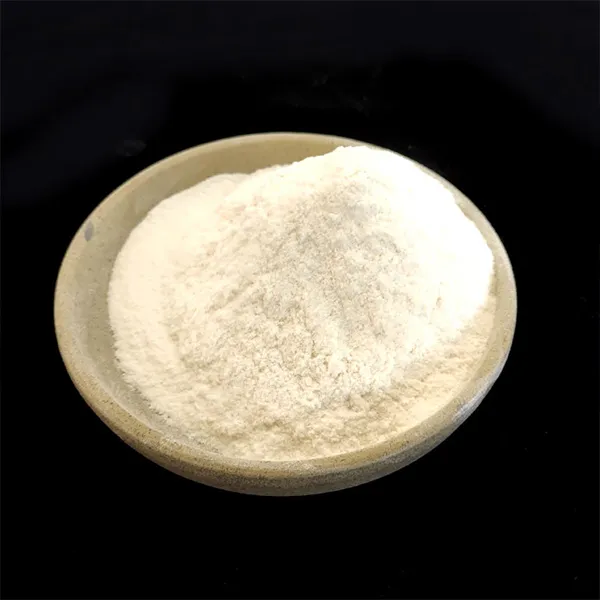Exploring HPMC Cellulose A Versatile Polymer in Modern Applications
Hydroxypropyl Methylcellulose (HPMC) is a cellulose derivative that has gained significant attention across various industries due to its unique properties and versatility. As a non-ionic, water-soluble polymer, HPMC has become an essential ingredient in pharmaceuticals, food, cosmetics, and construction materials. This article delves into the composition, properties, and applications of HPMC, underscoring its importance in contemporary practices.
Composition and Properties
HPMC is synthesized from natural cellulose, which is derived from plant fibers. The synthesis involves the reaction of cellulose with propylene oxide and methyl chloride, resulting in a polymer with hydroxypropyl and methyl functional groups. These modifications enhance its solubility and performance in aqueous solutions.
One of the most attractive features of HPMC is its ability to form gels in solution, making it a valuable thickening agent. Its viscosity can be tailored by altering the degree of substitution of the methyl and hydroxypropyl groups, allowing manufacturers to customize HPMC for specific applications. Additionally, HPMC is known for its thermal stability and resistance to alpha-amylase, making it suitable for various food applications where heat treatment is involved.
Pharmaceutical Applications
In the pharmaceutical industry, HPMC plays a critical role as an excipient in drug formulations. Its ability to form films and gels is beneficial in sustained and controlled release formulations, significantly enhancing the bioavailability of active pharmaceutical ingredients (APIs). HPMC is often used in the preparation of tablets and capsules, providing stability and improving the mouthfeel of oral dosage forms.
Moreover, HPMC's compatibility with a wide range of APIs makes it an ideal choice for both hydrophilic and hydrophobic drug formulations. Its non-toxic nature and absence of animal-derived components make it suitable for formulating products intended for sensitive populations, including children and the elderly.
Food Industry Applications
hpmc cellulose

HPMC is widely utilized in the food industry as a thickening, emulsifying, and stabilizing agent. Its capacity to retain moisture helps improve the texture and shelf life of various food products. For example, in baked goods, HPMC enhances the dough's elasticity and helps retain freshness, which is crucial for consumer satisfaction.
Additionally, HPMC serves as a fat replacer, contributing to the development of low-fat and reduced-calorie products while maintaining desirable sensory attributes. It is also commonly found in sauces, dressings, and dairy products, where it aids in consistency and stability.
Cosmetic Applications
In the cosmetics industry, HPMC is valued for its ability to improve the texture and application of products. It acts as a thickener and emulsifier in creams, lotions, and gels, providing a desirable viscosity that enhances the feel of the product on the skin. Its film-forming properties also contribute to the longevity of makeup products, making it a popular ingredient in foundations and mascaras.
Moreover, HPMC is known for its mildness and compatibility with sensitive skin, making it suitable for formulating hypoallergenic products. Its versatility allows formulators to innovate and create new products tailored to consumer demands, ranging from anti-aging treatments to moisturizing creams.
Construction Industry Applications
In construction, HPMC is often used as a crucial additive in cement-based products. Its water-retention properties improve the workability of mortar and plaster, facilitating easier application and reducing the risk of cracking during the drying process. Furthermore, HPMC enhances the adhesion of tiles and other materials, ensuring long-lasting results.
Conclusion
HPMC is a remarkable cellulose derivative that exemplifies the intersection of nature and innovation. Its unique properties make it an invaluable ingredient across various industries, from pharmaceuticals to food and cosmetics. As research continues to unlock new applications and improve formulations, HPMC is poised to remain a key player in enhancing product performance and consumer experiences in the years to come. By bridging the gap between functionality and sustainability, HPMC stands as a testament to the ongoing evolution of material science.
-
The Application and Significance of Construction RdpNewsMay.19,2025
-
Industrial Grade HpmcNewsMay.19,2025
-
Building Coating Adhesive Building Coating Adhesive HpmcNewsMay.19,2025
-
Application Of Hpmc For Detergent For Detergent In DetergentsNewsMay.19,2025
-
Application Of Hpmc Cellulose In Cement-Based MaterialsNewsMay.19,2025
-
Application Of High Quality Hpmc For Construction In The Field Of ConstructionNewsMay.19,2025




